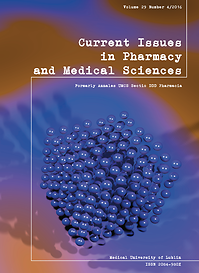The relationship between the physical activity of students from Lublin’s universities, and video games
DOI:
https://doi.org/10.1515/cipms-2016-0005Keywords:
physical activity, computer games, studentsAbstract
With the rapid development of computer technology, gaming has become more popular, and young people spend more and more time playing such games. It is thought that this a major factor responsible for the lowered physical activity of today's society. For a better understanding of the issue, we assessed how many students spend their free time playing video games, and how this form of recreation affects their levels of physical activity. The investigation of the relationship between physical activity and playing computer games was undertaken via a questionnaire containing 16 questions, and this was applied to a representative sample of 138 students drawn from Lublin’s universities. The results of this show that males are more physically active (85% compared to 75% women). However, only 9% men and 13% women train every day. To keep the body in shape, the most common activity for the respondents is aerobics training (approx. 30%), walking and cycling. Such exercise is performed to improve or keep in shape, and as a form of relaxation. However, one third of all respondents play video games, 70% of these are males and only 16% are females. What is more, our results show that there was no correlation between level of physical activity and gaming. In both groups, about 80% of all respondents are physically active. Yet, among the players, there are more overweight people (28%), as compared to 10% in the non-player group. Still, players, in contrast to popular opinion, are more active than non-playing people. No association was found between playing computer games and health problems.
References
1. Bielski J.: Aktywność fizyczna ucznia w czasie wolnym. Lider, nr 1, 7, 2010.
2. Eurobarometr 72.3: Sport i aktywność fizyczna. Badanie specjalne Eurobarometru nr 3.334 /Seria badawcza 72.3 TNS Opinion & Social 2010.
3. Florkiewicz B.: Aktywność ruchowa studentów Instytutu Kultury Fizycznej. In: Aktywność ruchowa ludzi w różnym wieku. Szczecin. Umiastowska D. (editor), PTNKF, Uniwersytet Szczeciński, 8, 42, 2008.
4. Gorner K., et al.: Aktywność fizyczna młodzieży w czasie wolnym na tle wybranych uwarunkowań. J. Health Sci., 4 (13): 266, 2014.
5. Kanitkar K.: The ever-increasing hours spent in front of video display terminals have led to a corresponding increase in visual and physical ills. Review of Ophthalmology E-Newsletter, 12, 4, 2005.
6. Karamuz J.: Internet jako narzędzie archeologii. Praca magisterska. Uniwersytet Kardynała Stefana Wyszyńskiego, Warszawa, 47, 2003.
7. Lisowska J. (2006), Rekreacja ruchowa osób dorosłych. In: Zarys teorii rekreacji ruchowej. Dąbrowski A. (editor). Druktur, Warszawa, p. 90.
8. Niźnikowska E.: Typ i rok studiów a aktywność fizyczna studentów państwowej szkoły wyższej w Białej Podlaskiej. Człowiek i Zdrowie, VI(1), 144, 2012.
Downloads
Published
Issue
Section
License
Copyright (c) 2016 Authors

This work is licensed under a Creative Commons Attribution-NonCommercial-NoDerivatives 3.0 Unported License.


